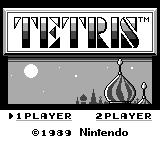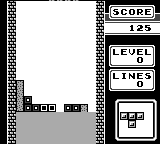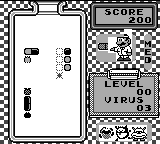C project, rendering through SDL.
Most of Game Boy games will NOT work. Known to be playable games, with glitches are: Tetris, Dr.Mario.
- Simple joypad support
- Simple save/restore function
- Embedded simple command-line debugger
- All the CPU instructions are now implemented
- Code is auto-generated
- /resources/table_gb.html is the main source of data
- generator is composed of /tools/{base_gen,cb_gen,gen_z80_instructions}.sh
- Current status: all CPU instruction tests but 02-interrupt, from the blargg test suite are passing.
- GPU
- Background rendering is still messy, need optimization and code clearing
- Sprite rendering is basic => need to implement sprite tile options
- Troobleshoot scrolling issues
- Sound support
- Serial link support
Under Debian 9 (should work with other linux distributions derived from Debian):
apt-get install libsdl2-dev cmake
mkdir build
cd build
cmake .. -DCMAKE_BUILD_TYPE:STRING=Release
make
To enable the built-in debugger
cmake ../emgb -DCMAKE_BUILD_TYPE:STRING=Release -DUSE_CONSOLE_DEBUGGER=ON
make
Then type <Ctrl>+C to enter the debugger and then type help to get started.
./gb ROM_PATH
Keys used are:
- W: start
- X: select
- V: A
- C: C
- arrows for D-pad
- F1: save game state
- F2: restore game state
Everything lies in the ~/.emgb/ directory.
Editing the config file allows to change keybindings, colors... Most configuration entries should be self-explicit.
Lines must have the form key=value, with whitespace characters not stripped and no support for comments.
Colors can be given in hexadecimal value 0xRRGGBB.
Key names are those used by the SDL function SDL_GetKeyName. Most of the time, it's the character itself, in uppercase if relevant. Please see the SDL source code here and there for more information.
Run
mkdir -p ~/.emgb
./joypad_mapping ~/.emgb
A configuration file, named after your joypad, will be created in ~/.emgb. You can test the joypad configuration with
./joypad_mapping --test ~/.emgb
Then launch normally a game, for example
./gb ../roms/Tetris.gb
Then you should see lines ressembling what follows:
looking for /home/nicolas/.emgb//8bitdo_sfc30_gamepad.mapping
loaded mapping successfully
which indicate that your joypad has been properly configured and detected.


